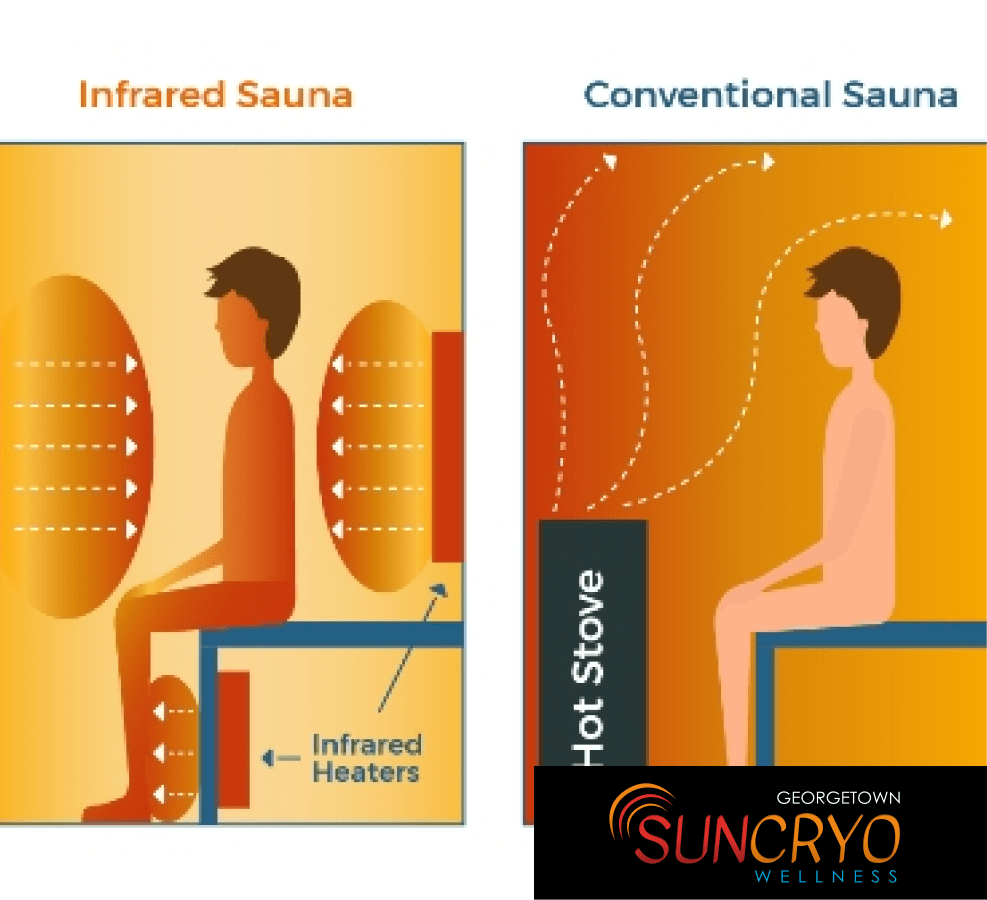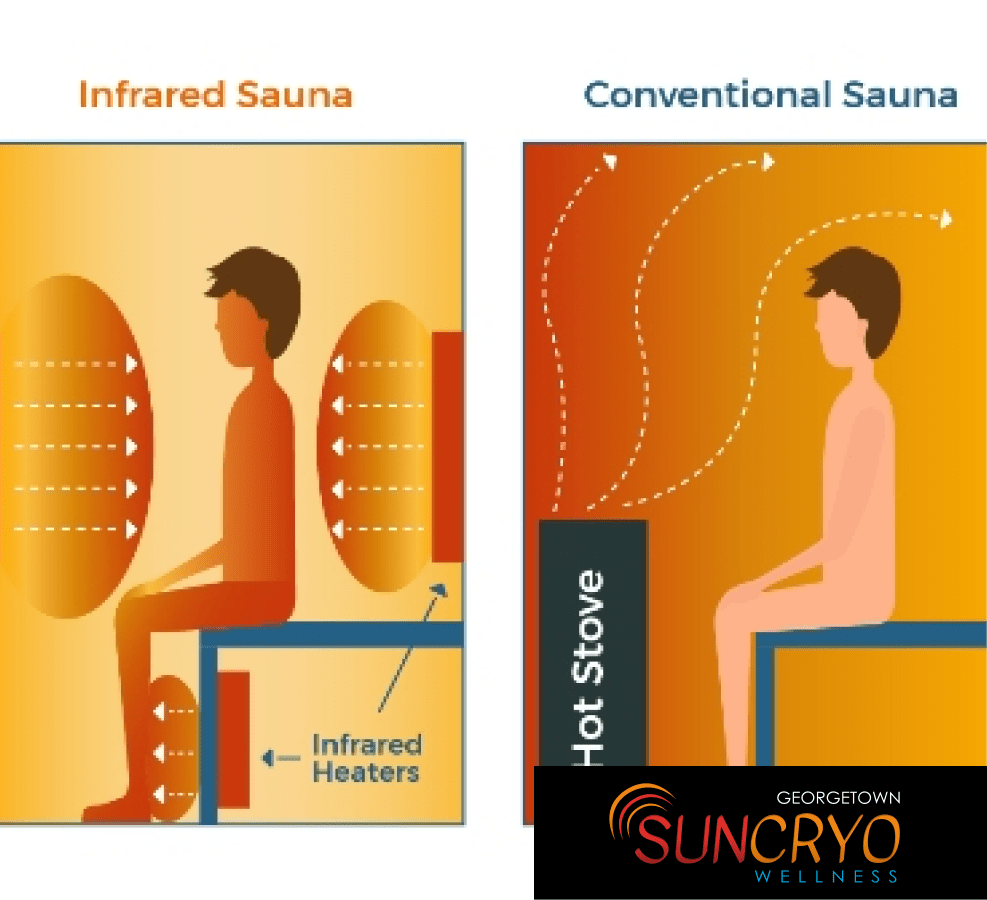infrared sauna vs sauna

The world of wellness has seen a surge in the popularity of saunas, both traditional and infrared, for their claimed health benefits. These heated rooms offer relaxation and a host of potential health perks, but the debate between traditional saunas and their infrared counterparts continues to puzzle many enthusiasts. So, what sets these two apart, and which one holds the upper hand in the realm of heat therapy? https://georgetownsuncryo.com/
Understanding the Basics
Firstly, let’s distinguish between the two sauna types. Traditional saunas, originating from Finland, generate heat by heating stones placed on a stove or heater, while infrared saunas use infrared lamps to emit radiant heat that directly warms the body, bypassing heating the air around.
Heat Penetration and Experience
One of the primary differences lies in the way heat is delivered. Infrared saunas penetrate the skin more deeply, heating the body from within, whereas traditional saunas heat the air, which then warms the body as you breathe in the hot air. This difference can lead to distinct experiences; some people prefer the ‘dry heat’ of traditional saunas, while others find the ‘gentler’ heat of infrared saunas more comfortable.
Temperature and Humidity
Traditional saunas typically reach higher temperatures (between 160°F to 200°F), with humidity levels fluctuating based on water being thrown on hot stones. In contrast, infrared saunas operate at a lower temperature range (usually between 120°F to 150°F) and maintain a lower humidity level, making it easier for individuals who find intense heat overwhelming to tolerate.
Detoxification and Health Benefits
Both types of saunas claim a range of health benefits. Sweating induced by heat exposure is said to facilitate detoxification, improve circulation, aid muscle recovery, and promote relaxation. Some studies suggest that traditional saunas may offer cardiovascular benefits akin to moderate exercise by increasing heart rate and improving blood vessel function. Infrared saunas, with their deeper penetration, might aid in more extensive detoxification due to increased sweat production.
Considerations and Precautions
When it comes to preferences, it often boils down to personal comfort and health considerations. Those with respiratory issues might find the lower temperatures of infrared saunas more tolerable, while others enjoy the ritualistic aspect and intense heat of traditional saunas.
However, it’s crucial to note that individuals with certain medical conditions, such as cardiovascular problems, should consult their healthcare provider before using either type of sauna. Pregnant women, individuals prone to low blood pressure, and those with heat-sensitive conditions should also take precautions and seek medical advice.
Conclusion
In the ultimate showdown between infrared and traditional saunas, there isn’t a one-size-fits-all answer. Both offer potential health benefits and a relaxing experience. The choice ultimately depends on individual preferences, tolerance to heat, and health considerations.
Some may gravitate towards the deep-penetrating warmth of an infrared sauna, while others find solace in the traditional sauna’s intense heat. Whichever you choose, incorporating sauna sessions into a balanced lifestyle can be a soothing and potentially beneficial addition to your wellness routine. As always, it’s wise to consult with a healthcare professional before starting any new health regimen, especially one involving heat therapy. https://georgetownsuncryo.com/
